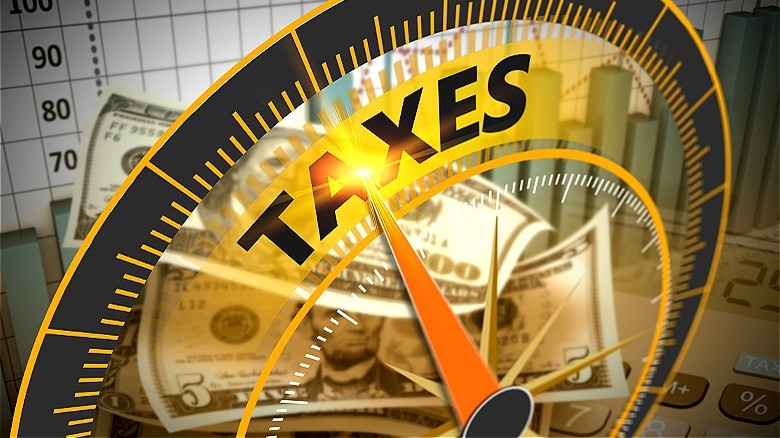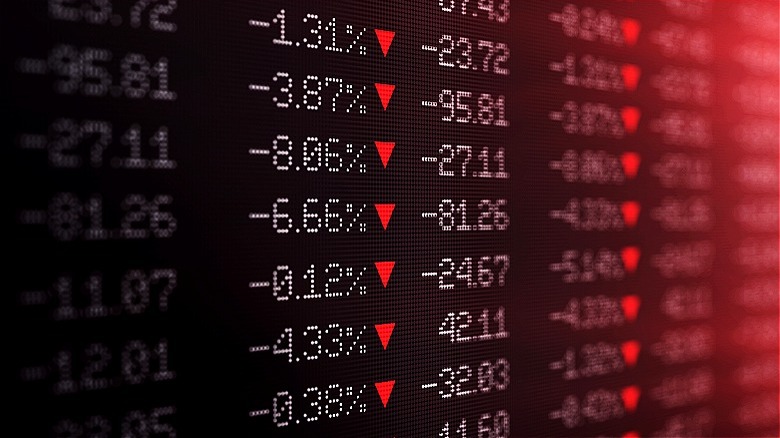The Risk That Comes With Stock Lending
New investment products are seemingly creeping into the public sphere constantly. From options trading (a practice begun in earnest in 1973 with the establishment of the Chicago Board of Options Exchange) to cryptocurrency's arrival in the late 2000s infusing new value into investor portfolios, plenty of unique avenues exist for investors. Stock lending is one of those avenues investors have available. Through it, the arrangement helps institutional investors execute short sales and hedges and can turn a potentially lucrative monthly profit for the lender.
In existence for decades in one form or another, stock lending has really taken off in recent years. Back in 2009, at an SEC roundtable, Rick Ketchum, the chairman and CEO of FINRA, noted a shift in market behavior. He said at the time that "firms are increasingly attempting to borrow from retail customers, who are seen as essentially the last large untapped source of additional securities." He further noted that safeguards surrounding this practice weren't necessarily built in consideration of retail customer participation in the practice.
Even with this somber reminder that the practice of securities lending is primarily concerned with corporate participants (i.e., large-scale traders/lenders), default and other catastrophic consequences are highly unlikely. But some risks do pervade the stock-lending atmosphere for the everyday stock investor. Lending stock products might be a great option for you, as a retail investor seeking a new means of developing potent returns, however, it's crucial to keep the level of risk inherent to the practice in mind.
Tax considerations change when a stock is lent out
The most immediate risk a retail investor runs when taking up stock lending is the tax implication. When lending your investment assets to others, you retain ownership of the underlying instrument, this means you'll still be paid dividends, even if you lend out your voting rights alongside the stock holding (a minimally important feature for most). However, the payment isn't completed in the same manner that straightforward stock ownership enjoys. Rather than true dividend earnings, you'll be paid "cash in lieu of dividends," sometimes called "manufactured dividends." Payment will also flow through a slightly different channel. The minutiae of this particular transaction might not seem all that important on the surface, but there's a drastic change in the way you'll have to deal with this payout come tax season.
Manufactured dividends are considered "ordinary," unlike the qualified dividends you receive in a straight payout format through typical ownership of most stocks. Qualified dividends get preferential treatment on your taxes. Depending on your adjusted gross income, you may ultimately pay a 0% tax rate on the earnings, with a maximum tax burden of 20% for the highest earners. Compared to the 37% levied against ordinary income on the highest dollar earnings (here's how to tell which federal tax bracket you're in), this can become a major sticking point. In your circumstances, the added tax burden might be small, but any money you lose to Uncle Sam is capital lost that might otherwise have been protected.
Default is an unlikely but potentially harmful outcome
At the extreme end of the spectrum of consequences, it's possible—yet incredibly unlikely—that a borrower defaults on their obligation to you as a stock lender. Stock ownership is federally insured (through SIPC), much like the FDIC coverage that secures your checking and saving accounts against bank collapse. However, there's a key difference in these two asset classes. While your checking account is true cash and will be repaid through the federal insurance scheme, your stock assets are a different sort of financial instrument. Moreover, lent stocks are no longer covered, but instead receive collateral backing from the borrower. When an institutional investor borrows stocks, they set aside cash assets worth 105% of the value that secures the debt for the lender.
All this means that you aren't risking total loss when lending your stock assets—a big relief, to be sure. Yet, there's a different kind of risk you're taking on in the event of a default. When you halt your stock lending approach, the ownership returns to its original state, and your holdings are largely unaffected. The same is true in the event you sell the stock; lending arrangements don't impose any changes on the value of the asset. But repayment for a default essentially trades your holdings for a cash settlement. This means that buying new shares to replace the assets lost will be done at the current market price, not the value you paid for your holdings. In the event of large growth over a long timeline, this could mean a major depreciation of your total value.
Lending volume can signal market shifts, too
Perhaps the most immediate issue with stock lending is the underlying trend that it can signal in the market. Many institutional investors borrow stock from others, including retail traders, in an effort to position themselves to execute a short sale. This means the institutional research behind the decision indicates a downward trend in a stock's pricing. This might prove a long position or one that looks to take near-immediate effect. Regardless, keeping track of the specific assets that stock borrowers are seeking may be a quality opportunity to gauge the pulse of the market, as well as the overall outlook of your own holdings.
While the payout from a stock-lending operation might prove lucrative, if Wall Street investment analysts get it right on most occasions as it relates to your stock positions, it might signal a trending weakness in your portfolio's value growth capabilities. The tradeoff might not actually work out as beneficial financially, especially if your tax burden is significantly altered in the process, too.



